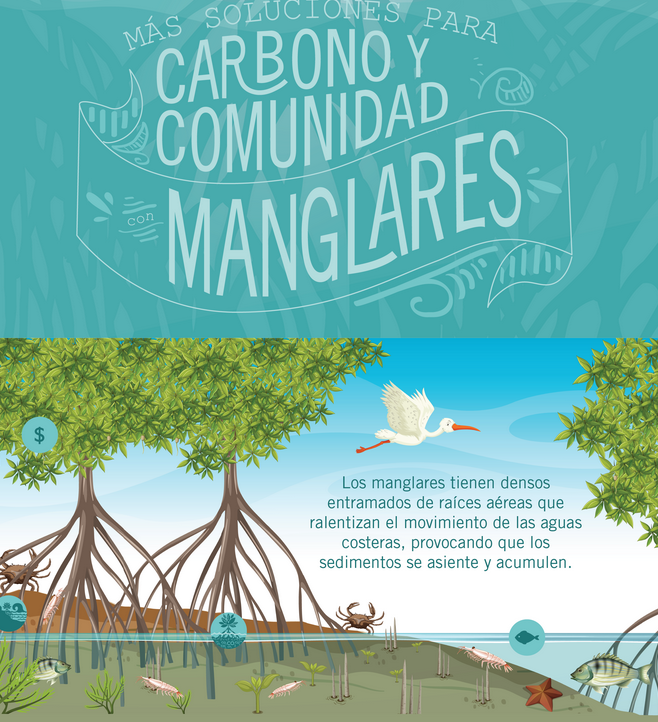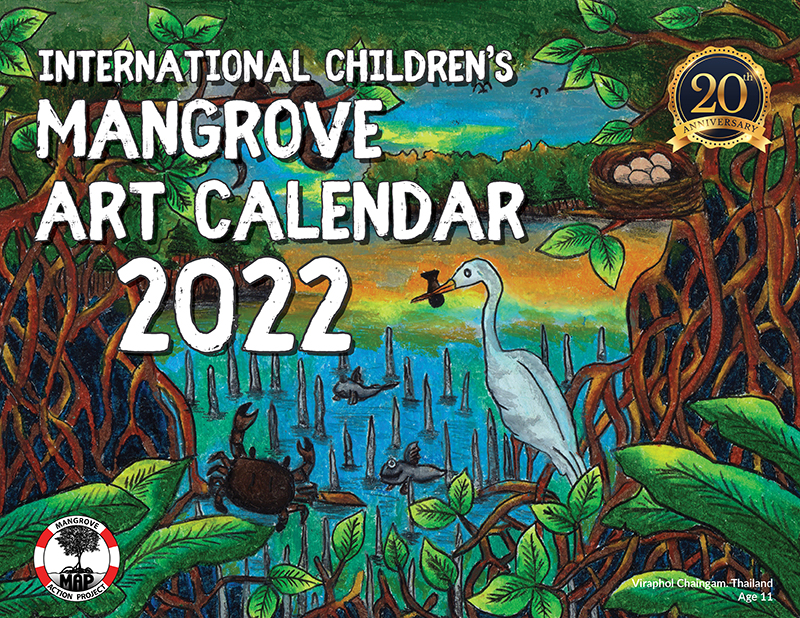MAP News Issue #552 – Aug 13, 2022
The MAP News | |
FEATURED STORY Cayman Islanders & and Mangrove Rangers produce Mangrove Videos for Young and Old CAYMAN ISLANDS – The community of adults and youth in Cayman Islands has come together recently to release a series of educational videos. Each is geared towards presenting information about mangrove restoration in a light, educational way. From children’s stories to raising a cold beer that supports mangrove conservation efforts, Cayman Islanders are helping the world find new ways to celebrate the biodiversity in their back Yard. MAP’s education Director, Martin Keeley has been busy recently helping groups participate in clean-ups and better understand the importance of tropical forests in their own back yard. And the videos do more than educate. They are fun, affirming snippets of the lives of many environmentally conscious citizens of these Caribbean islands. We invite you to watch these short films and share them with your family and friends. The future of our planet just may rely on it! WATCH VIDEOS GLOBAL Global Awareness Critical To Protect World’s Mangroves  GLOBAL – Time is running out to protect the world’s mangroves which are not only home to many species but also an important hedge against climate impacts, the head of the UN Educational, Scientific and Cultural Organization (UNESCO) said. Audrey Azoulay, the UNESCO Director-General, called for greater global awareness about these critical coastal areas in her message to mark the International Day for the Conservation of the Mangrove Ecosystem. It is estimated that more than three quarters of mangroves in the world are now threatened, “and with them all the fine balances that depend on them”, she said. Ms. Azoulay announced that next month, UNESCO will launch a new mangrove restoration project in seven Latin American countries: Colombia, Cuba, Ecuador, El Salvador, Mexico, Panama, and Peru. The project will bring economic opportunities to local communities. It will also facilitate the exchange and sharing of knowledge between local and indigenous populations and the scientific community. READ MORE AFRICA Environmentalist Azibaola Robert calls for protection of wildlife and climate change  NIGERIA – The forestry subsector in Nigeria is a critical source of livelihood for many people – particularly those in the Niger Delta region. Directly sitting on the Gulf of Guinea, the Niger Delta houses Africa’s second largest swamp forest and the Central African mangrove ecoregions, consisting of Africa’s largest mangrove swamps. This forestry subsector contributes significantly to the socio-economic development in the country. With sawmills and furniture shops littered across the moist streets of Niger Delta, it is a significant employer of labour and a principal source of timber, pulp and paper. But the recent increase in wood logging in the Niger Delta is a cause of concern. Although perpetrators argue that it is their way of contributing to the GDP, wood logging is depleting the country’s natural forest resources. This indiscriminate logging in the rainforest and uncontrolled felling of trees could trigger ecological imbalance and loss of biodiversity. It could also cause desert encroachment, wildlife migration, soil erosion, flooding, and disruption in the hydrological cycle of the water catchment area. To this end, Azibaola Robert is speaking up against the mindless wood logging and the depletion of natural forest resources for economic gains in the Niger Delta. READ MORE Blockage of Canals Affects Growth of Mangroves  GHANA – he Regulations Manager of the Wildlife Division under the Forestry Commission, Mr Vincent Dickson Agyeman,says the blockage of canals that allows the flow of sea water into lagoons was having a negative impact on the livelihood of residents living around wetland areas. The blockage of the canals, which according to Mr Agyeman,was caused by silting materials was affecting the growth of the Mangroves as communities around the wetland areas depended on them for survival. “Individuals in these communities harvest these mangroves which they sell as firewood to customers from neighbouring towns and villages, while others use it for building among other purposes”, he said. Mr Agyeman was speaking with journalists during a media tour of the Anghor Lagoon, in the Volta Region, organised by the Media Platform on Environment and Climate Change (MPEC) with support from International Union for Conservation of Nature (IUCN). The purpose of the tour was to create awareness about the status of Ghana’s Mangrove forests. READ MORE Sand mining at Denton Bridge affects 5000 mangroves  GAMBIA – The coordinator of the West African Birds Study Association (WABSA), has raised eyebrows about the ongoing sand mining activity around Denton Bridge, saying the activity has affected almost 5000 mangroves trees and 4000 coconut trees that were planted along the Banjul beach last summer by community members of Ndangan and Hamza Barracks. Annette Camara, who doubles as communication officer was speaking in a recent interview with this medium. She also attributed that the illegal cutting of thousands of mangroves by contractors is having a devastating impact on the environment, as most of the mangroves are used to construct fences. She acknowledged that the city of Banjul is below sea-level and thus poses serious threats to the residents, who always suffered from inundation due to poor drainage system, poor physical planning and deforestation. “Cutting the mangroves for ports extension, sand mining amongst others without priority for standard drainage system, negligence towards the pumping station also contributed a lot.” READ MORE Tanzanian villagers wake up to realize benefits of mangroves AMERICAS Protecting One of the World’s Most Distinctive and Valuable Forests  MEXICO – Blue carbon and its many benefits are popular topics in discussions about how to address climate change. Many types of blue carbon projects hold tremendous potential for sequestering carbon and protecting their ecosystems, but they are not yet established, which has opened some debate about how impactful blue carbon can be in sequestering greenhouse gases at the scale we need. There is, however, one type of blue carbon offset project that can be accurately, reliably and transparently measured in terms of emissions reductions. And it is critical for supporting local ecosystems and communities. It’s mangrove forests. This summer the Climate Action Reserve registered the first-ever mangrove forest project in Mexico, marking a significant milestone in demonstrating the impact and feasibility of this type of project. The Reserve’s Mexico Forest Protocol encourages the protection, improved management and restoration of mangrove forests through the issuance of offset credits for additional emissions sequestration activities above the baseline. Communities following the protocol receive economic incentives and resources to ensure that these coastal ecosystems provide greater benefits for surrounding communities and biodiversity, build greater resilience to the impacts of climate change and store more carbon to benefit the global climate. READ MORE Battle over mangroves and future land on San Carlos Island  USA – There’s a battle brewing over mangroves and the future of the land on San Carlos Island. A developer wants to get rid of them to build homes while others want to see them stay to protect wildlife and our water quality. The proposed project by the owner of the mangrove lots if approved will destroy the mangroves on at least one lot on San Carlos Island. Homeowner Julie Campbell says it’s a threat to water-filtering mangroves, wildlife, and water quality. “Somebody’s got to stop the destruction of this. There’s not a manatee that’s gonna talk to you on camera and say ‘hi that’s where I birth my children, that is where I eat,’” Campbell said. This impacts Estero, Pelican, Hurricane, and San Carlos Bays. READ MORE Action to protect one of island’s last mangrove forests approved  BERMUDA – An effort to protect mangroves at Hungry Bay from the impact of climate change has been approved by the Department of Planning. The plan put forward by Hungry Bay residents proposed the construction of a seawall to replace a natural breakwater destroyed by hurricanes at the South Shore site. A planning report said: “It is evident by the details of the submission that action needs to be taken to preserve one of the last remaining tracts of mangrove forests on the island. “With the threat of sea level rise and more frequent and intense storms caused by the effects of climate change, the need for more substantial solutions to coastal management will increase.” The planning application submitted this year by the Hungry Bay Restoration Committee and property owner James Tucker proposed a four-foot seawall to block a gap in the shoreline caused by Hurricane Fabian and expanded by later storms. The application said that since 2003 increased wave action in the bay had caused mangroves in the area to recede and further loss was “inevitable” unless action was taken. The Marine Resources Board said it supported the proposal, but raised concerns that the concrete wall could redirect wave energy towards other areas sparking erosion there. READ MORE ASIA Burrowing crabs bring beneficial bacteria to mangroves  SAUDI ARABIA – Fiddler crabs burrowing beneath arid mangrove forests help bring beneficial bacteria to an ecosystem in dire need of nutrients. Plant growth in arid mangrove forests is limited by a lack of rainfall, poor nutrient availability and high soil salinity. “Mangroves are the most efficient ecosystem in the world at absorbing carbon dioxide and therefore fighting climate change,” says marine scientist Marco Fusi. As global warming puts pressure on these essential ecosystems, biologists are investigating ways to improve their resilience. “Arid mangroves are challenging environments that offer a unique opportunity to study how plants and animals have adapted to cope,” says marine microbiologist Jenny Booth. Soil bacteria play a major role in processes that sustain plant growth, such as transforming dead vegetation into useful nutrients. Despite its importance for the health of forest habitats, the sediment microbiome of mangrove ecosystems has been largely overlooked. Mangroves are home to a multitude of animals, from worms to lobsters, that live and burrow in the sediment. A team led by Booth and Fusi investigated whether soil disturbance, or “bioturbation,” by fiddler crabs affects the microbiome, and therefore plant growth, in an arid mangrove system on the Red Sea. READ MORE Ministry to set mangrove rehabilitation areas for int’l cooperation  INDONESIA – The Environment and Forestry Ministry will determine mangrove restoration areas that will be supported by international collaborators in order to ensure no overlapping rehabilitation projects in the same area. Director General of Watershed Management and Forest Rehabilitation at the ministry Dyah Murtiningsih stated here on Wednesday that several countries and international institutions were keen to collaborate with Indonesia to conduct mangrove rehabilitation. Murtiningsih conveyed the statement on the sidelines of a workshop on land degradation and mangrove rehabilitation that was a side event of the 2022 G20 Environment Deputies Meeting and Climate Sustainability Working Group (EDM-CSWG). Several countries, including Saudi Arabia, Germany, Japan, and the United Arab Emirates, had shown interest in cooperating to expedite Indonesia’s mangrove rehabilitation program, she noted Furthermore, Indonesia and the World Bank will collaborate in implementing the Mangrove for Coastal Resilience (M4CR) project that not only focuses on mangrove rehabilitation and conservation but also on building the capacity of coastal communities. READ MORE OCEANA Mapping Missing Mangroves  AUSTRALIA – Tidal wetlands can change rapidly. A new study of tidal wetlands around the world found that 4,000 square kilometers (1,500 square miles) of these ecologically important areas were lost between 1999 and 2019. The researchers examined three types of tidal wetlands using Landsat data: tidal flats, marshes, and mangroves. They found that mangroves had the highest ratio of loss to gain, with an estimated net decrease of 3,700 square kilometers (1,400 square miles). However, tidal wetlands are affected by a number of different processes, and despite an overall net loss globally, the team found that wetlands had expanded in some places. The largest changes occurred in river deltas, where sediment supply can change rapidly. This can be due to factors like deforestation and erosion upstream that help build new wetlands downstream, or dams that hold sediment back and cause wetlands to shrink. “Our data suggests a net loss of tidal wetlands on deltas globally, though gains of 2,100 square kilometers (810 square miles) alongside losses of 2,300 square kilometers (890 square miles) indicate the considerable dynamism of these systems,” wrote study lead Nicholas Murray, an ecologist at James Cook University in Australia, and colleagues in Science. READ MORE Pease consider donating to MAP to keep it going. *Articles in this newsletter may mention practices being used and/or show exagerated results being claimed without proof. Stories are presented here in effort to show mangrove related activity around the world and do not necessarily reflect Mangrove Action Project’s views or mangrove restoration best-practices. | ACTION ALERTS Do not sacrifice Congo’s rainforests to the oil industry! TAKE ACTION Please see the survey questionnaire we at MAP put together to discover where the shrimp industry is still having major adverse effects on mangroves and local communities. Stop the Dredging – 6.7 million cubic meters of sand from the Addu atoll basin will destroy nature, biodiversity and the natural defences and resilience of this UNESCO Biosphere Reserve. SIGN THE PETITION Keep fossil fuels out of Bangladesh for the health and wellbeing of the local communities, the beautiful regional beaches and forests, the Bangladeshi economy, and our shared climate. SIGN PETITION Stop this total madness Stop the biggest heated oil pipeline in the world — right through the heart of Africa! Like this newsletter? Pease consider donating to MAP to keep it going. Giving could never be easier MAP Website en Español ARTWORK SUBMISSIONS DEADLINE EXTENDED AUGUST 31st 13 Year old Linda Li “Mangrove Adventure” from Kid Dream Art School
Video: Mangroves for the Future WANT TO GET INVOLVED?
Like this newsletter? Pease consider donating to MAP to keep it going. Giving could never be easier
Interested in connecting or working with MAP? Check out our opportunities here MANGROVE ISSUES Want to learn more about mangroves? What is CBEMR? Download MAP’s 2 page CBEMR Information Sheet containing links to all MAP’s CBEMR resources – CLICK HERE View MAP’s uploaded Videos at Question Your Shrimp Consumer/Markets Campaign! Mangroves: Guidebook to Malaysia – Click Here SHARE MAP’S VISION Our short documentary, Reducing the Risk of Disaster through Nature-Based Solutions : Mangroves NASA Study Maps the Roots of Global Mangrove Loss Marvellous Mangroves Curriculum The Marvellous Mangroves Curriculum begins with a simple philosophy – getting future generations to not only learn about, but understand the importance of mangrove forests. VISIT Marvellous Mangroves Curriculum in Bangladesh – WATCH VIDEO
Like this newsletter? Pease consider donating to MAP to keep it going. Giving could never be easier
“Question Your Shrimp” Campaign Question Your Shrimp – is it really sustainable? Sign the Petition Note to Our Readers: We strive to keep active links in our newsletter. However, due to circumstances beyond our control, occasionally links to stories may become broken. If you find a link to a story is not functioning, please cut and paste the headline into your browser search bar. In most cases you should be able to locate the original story. Not yet a MAP News subscriber?
|
Mangrove Action Project Click here to view past newsletters
| |


















